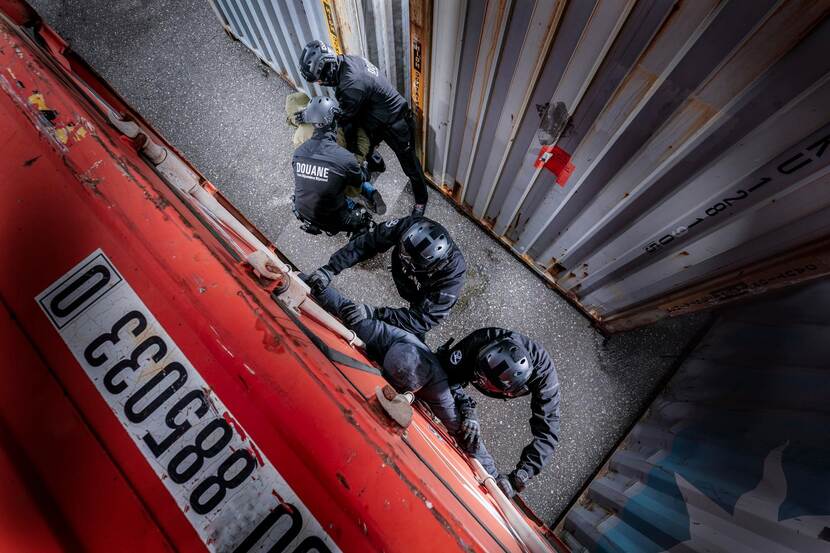Barriers at seaports prove their worth: Customs intercepts fewer drugs in first half of 2024
Customs seized fewer drugs in the first half of 2024 than in the same period last year. That is apparent from Customs' half-year figures on drug seizures. Customs intercepted more than 16,000 kg of cocaine at Dutch seaports this year. That is far less than the more than 28,000 kg in the same period last year. The biggest cocaine haul in recent months was over 3,600 kilos in June at the port of Vlissingen.
The barriers seem to be having the desired effect. Dutch seaports have become less attractive to criminal drug smuggling networks. Dutch customs is throwing up barriers by strengthening the information position by placing liaisons in Latin America, deploying innovations and specialist teams and increasing its cooperation with the business community.
Fewer drug hauls at northern European seaports
The same trend is emerging in the larger north-west European seaports as in the Netherlands. It seems that other routes are currently preferred over cocaine imports through these ports. In southern Europe, the picture is mixed: there has been a sharp rise in hauls of cocaine in warehouses, but a fall in hauls of cocaine at sea (such as hauls on board, or on fishing boats).
Ongoing commitment to strengthening barriers
Dutch Customs is continuing to erect barriers that matter. Liaisons have been posted in South America, and Customs is cooperating with Brazilian Customs for analysing scanning images. The placement of liaisons in other countries is being explored and work will continue in the coming period on the programme Weerbare Haven Terminals (Resilient Port Terminals). Within this programme, in consultation with container terminal operators, efforts are being made to shorten the inspection notice period and reduce the number of employees involved in container handling. This also reduces the risk of criminal infiltration.
The third pillar of the programme is keeping selected high-risk containers under surveillance throughout the process from unloading to release and scanning as soon as possible after unloading: 'compartmentalisation'.
Air cargo findings
Findings in air freight show a stable trend. 720 kilos of cocaine were seized compared to 680 kilos last year. Notable findings in the first six months of this year include 60 kg of cocaine in sports bags in an air cargo container from Canada. Cocaine from countries outside Latin America is increasingly being found.
Drugs by post
In outgoing letter mail, there were about 6,300 findings in the first six months of this year, mainly involving synthetic drugs such as XTC/MDMA, LSD and amphetamine. Cannabis and cocaine were also frequently intercepted. The total number of findings is substantially less than the 9,000 positive findings of drugs in outgoing mail in the first half of 2023. Structural intensive controls and the establishment of the HARP (Hit and Run Post Team) make senders of drugs by post more likely to divert to other countries. HARP aims to detect and prosecute senders of drugs by post through intensive mutual cooperation between Customs, the police and the Public Prosecution Service in one operational team.
Nationwide cooperation
There is also intensive national cooperation to combat drug smuggling at Europe's external border. For example, Customs participates with parties including FIOD, the police and the Public Prosecution Service, in Hit and Run Cargo (HARC) Teams and the HARP team mentioned above. Customs are regularly seized partly thanks to intelligence from partner organisations.
European cooperation in the fight against drugs
The approach to drug crime has intensified at European level. This year, for example, the European Commission created the 'Ports Alliance'. Dutch Customs is working increasingly closely with European customs organisations within the Ports Alliance. For example, work is underway to strengthen a European Customs network within which we can even more easily exchange the modus operandi of criminals or share experiences in making ports more secure. There is closer cooperation not only among Customs but also with other parties from these countries, such as the police, investigative services, terminals, shipping companies, the World Shipping Council and port authorities.
